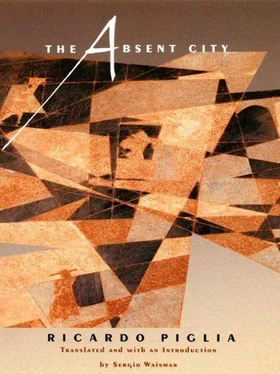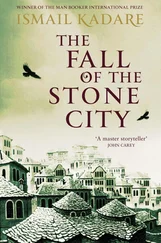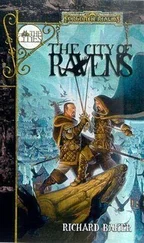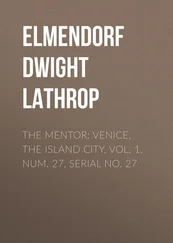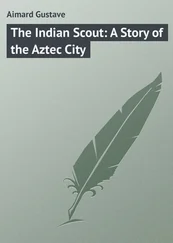“You know,” he says to me, “this is the map of hell.” The ground was a map, what I’m telling you here, it’s true, it was a map, I mean, of unmarked graves, with frost-burned sections like slabs of stone and then earth or grass. It can only be covered over so much because in the long run the frost burn, the dug-up earth, can be seen, but of course the harm has already been done by then. Because at times when they knew that there was a mound of rocks underneath they would try to joist them out, there were even some long trenches out there, they would dig until they hit some stones and then they would just stop, see? That’s what you’d see, in the winter, out in the large prairie of Las Lomitas. The grass had been burned by the frost and you could see all the pits, especially the ones with slaked lime, you could see them everywhere, ones of this shape, others lengthwise, you could see very large numbers of them, let me tell you. A map of graves like we see in these mosaics, like this, that was the map, it looked like a map, after the frost, the earth, black and white, a map of hell.
The Museum was in a remote part of the city, near the park and behind the Congress Building. To get to the round hall where the machine was exhibited you had to go up a ramp and along a corridor with acrylic walls. You could see her at the end of the hall, standing on a black platform. Diagrams, photographs, and copies of the texts were mounted along the walls. Junior jotted down a few items in his notepad as he walked through the gallery following the history displayed in the glass cases.
At first they had tried to make a machine that could translate texts. This was a fairly simple system; it looked like a phonograph with all sorts of cables and magnets inside a glass box. One afternoon they fed it Poe’s “William Wilson” and asked it to translate it. Three hours later the teletype began to print the final version. The story was stretched out and modified to such a degree that it was unrecognizable. It was now called “Stephen Stevensen.” That was the first story. In spite of its imperfections, everything that followed was already synthesized in that first story. The first work, Macedonio had said, anticipates all those that come after it. We had wanted a machine that could translate; we got a machine that transforms stories. It took the theme of the double and translated it. It makes due as well as it can. It takes what is available and transforms what appears to be lost into something else. That is life. Macedonio was fifty years old at this point. He did not want to sell the patent because there was nothing to sell. He had intended to perfect the apparatus (as he called it) with the intention of entertaining people in small towns out in the country. I think it is an invention that will be more entertaining than radio, he used to say, but it is still too early to call it a success. He admonished prudence and refused to accept any form of support from the government. He was going to give a lecture at the university to explain the scope of the invention. (“It’s part of ‘The Ohno?’ series,” Macedonio said. “What are ‘The Ohno?’? They are devices that no one ever believes will work until they are seen in full operation.”) Everything had gone very well. Better than expected. The machine had grasped the form of Poe’s narration and proceeded to change the anecdote. The next thing they had to do, therefore, was program it with a variable set of narrative nuclei, and let it go to work. The key, Macedonio said, is that it learns as it narrates. Learning means that it remembers what it has already done, it accumulates experience as it goes along. It will not necessarily make better stories each time, but it will know the stories it has already made, and perhaps give them a plot to tie them all together at the end. He thought it would be an extremely useful invention because there were very few old men left to tell ghost stories in the countryside at night. The last one I knew lived in Coronel Vidal; the guy who told the story about the invisible gaucho, Macedonio said. He came up with it all by himself, out of nowhere, perfecting it with time, drinking mate out in the country, the strong winds of the prairie blowing in his face. A cousin of mine once wrote to tell me that someone had told him the very same story in Spain. And the same story also appeared among a group of sailors in the Canary Islands, on Tenerife Isle. But the person who lived it was Don Sosa, a cattle herder who ended up paralyzed from jumping in the water so many times to rescue lost calves when he worked in the Echegoyen cattle ranches near Quequén. Here is the story.
Burgos was a short cattle herder of Indian descent who was hired in Chacabuco to help drive a herd of cattle to Entre Ríos. They left at dawn, but were hit by a storm when they were only a few leagues out. Burgos worked with the others to keep the cattle from running off. Toward the end, he saved a lost calf that had gotten stuck in the mud, its legs spread out in the wind and rain. He hoisted it up without getting off his horse and placed it across his saddle. The animal struggled. Burgos held it with just one hand and rode over to release it with the rest of the herd. He did it to show off his skills, as if he thought the move would earn him the respect of his companions. But he regretted it at once because none of the other men looked at him, nor did anyone make the least comment. He put the incident out of his mind, but he began to get the strange feeling that the others had something against him. They only spoke to him when they were giving orders, and they never included him in their conversations. At night he was the first to go to sleep, and he would see them from under his blankets laughing and telling jokes near the fire. He felt he was living a nightmare. He had never been in a situation like this in the sixteen years of his life. He had been mistreated, but never forgotten and ignored. The first stop was in Azul, where they arrived late on a Saturday afternoon. The leader said they would spend the night in town and leave the next day at noon. They put the cattle in a small yard, which everyone called the church corral, close to where the town ended and the plains began. It was said that a chapel once stood there that had been destroyed by the Indians in the Great Indian Raid of 1867. There were a few low walls left that served to keep the cattle inside the corral. Burgos thought he saw the shape of a cross formed by the bricks where some weeds grew. It was a hole of light in the wall, drawn by the sunlight. Enthusiastic, he showed it to the others, but they walked right on past as if they had not heard him. The cross could be seen clearly in the air as the sun set. Burgos kissed his fingers and crossed himself. There was dancing in the general store. Burgos sat at a table apart from everyone else. He saw the men laughing together and getting drunk. He saw them head to the back room with the women who were sitting in a line at the counter, and would have liked to pick one out for himself as well, but he was afraid of being ignored, so he stayed where he was. Still, he imagined picking out the attractive blond in front of him. She was tall and seemed to be the oldest of the group. He would take her to the room, and when they were lying in bed, he would explain what was happening to him. The woman wore a silver cross that hung between her breasts and spun it around while Burgos told her the story. Men like to see others suffer, the woman said, they looked at Christ because they were drawn by his suffering. She spoke with a foreign accent. If the story of the Passion weren’t so horrendous, the woman said, no one would have bothered to look after the Son of God. Burgos heard the woman saying this to him and got up to ask her to dance, but he thought that she would not see him, so he pretended he had gotten up to order a gin. That night the men did not go to sleep until dawn, and everyone slept well into the morning. Around noon they started to herd the cattle out of the corral toward the road. The sky was dark and Burgos did not see the cross in the church wall. They galloped in the direction of the storm, where the low clouds blended into the broad fields. A little later raindrops as heavy as twenty-cent pieces began to fall. Burgos covered himself with his watertight poncho and rode in front of the herd. He knew how to do his job, and they knew that he knew how to do his job. This was the only bit of pride left in him, now that he was less than nothing. The storm grew worse. They drove the cattle to the edge of a ravine and held them there the entire afternoon while the rain continued to fall. When the weather cleared up, the men went out to retrieve the animals that had gotten away. Burgos saw a calf that was drowning in a lagoon that had formed in a hollow. It must have had a broken leg, because every time it tried to climb out, it slid back in. He lassoed it from above and held it up by its neck. The animal twisted around and kicked the air in desperation. It got away from him and fell back into the water. The calf’s head floated in the lagoon. Burgos lassoed it again. The calf was kicking its legs and gasping for air. The other men gathered around the edge of the deep hollow. This time Burgos held it up for a while, and then let it drop. The calf sank and took a while to resurface. The men started making comments to each other. Burgos lassoed it and raised it up, and when the calf was near the top, he dropped it again. The men reacted with shouts and loud laughter. Burgos repeated the operation several times. The animal would try to avoid the lasso and would sink back into the water. When it tried to swim away, the men urged Burgos to fish it out again. The game went on for a while, amid jokes and jests, until Burgos finally lassoed the calf out, after it had nearly drowned, and lifted it up slowly to the feet of his horse. The animal was lying in the mud, gasping for air, its eyes white with fright. Then one of the men jumped off his horse and cut its throat with one quick slash.
Читать дальше
